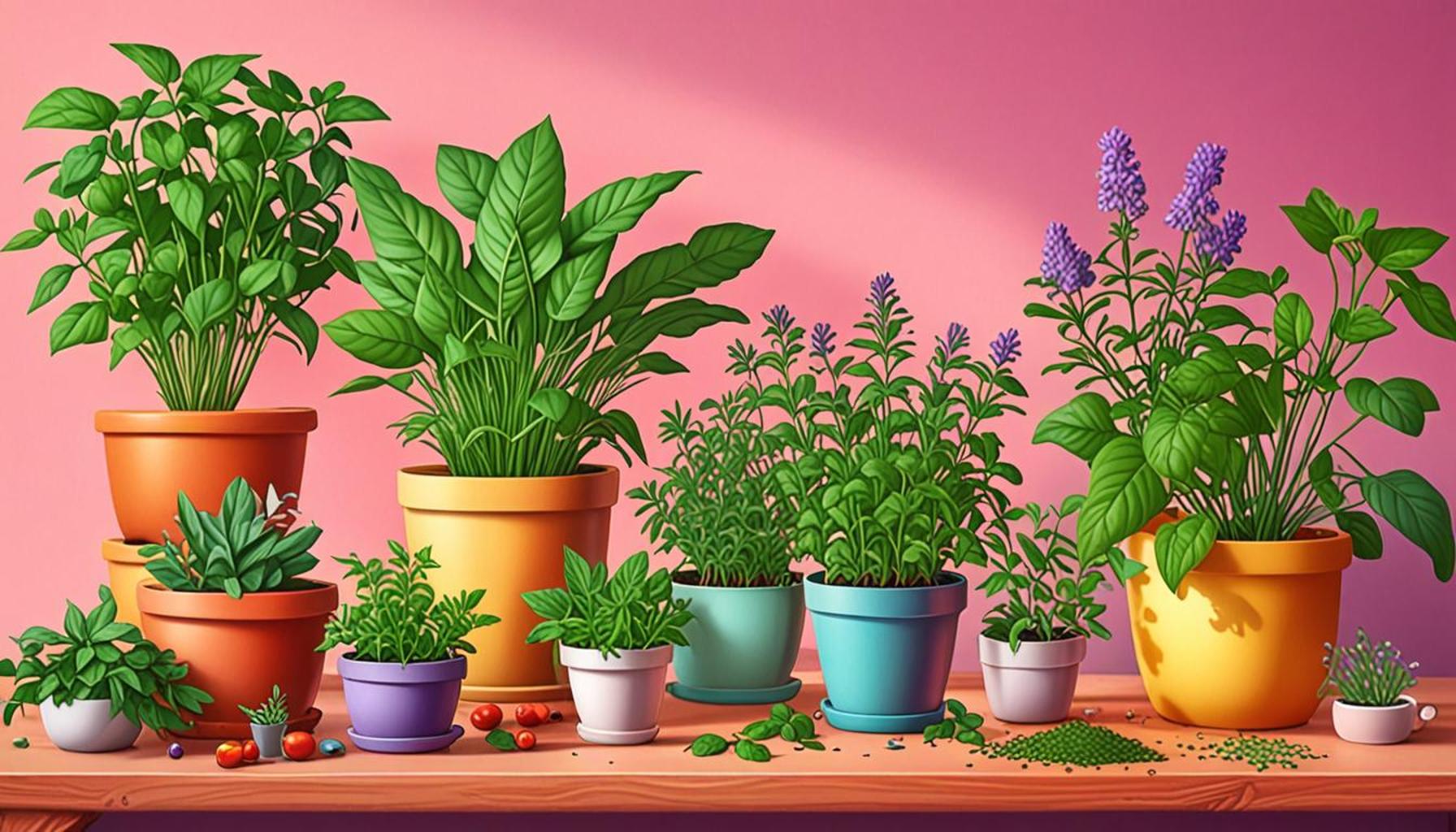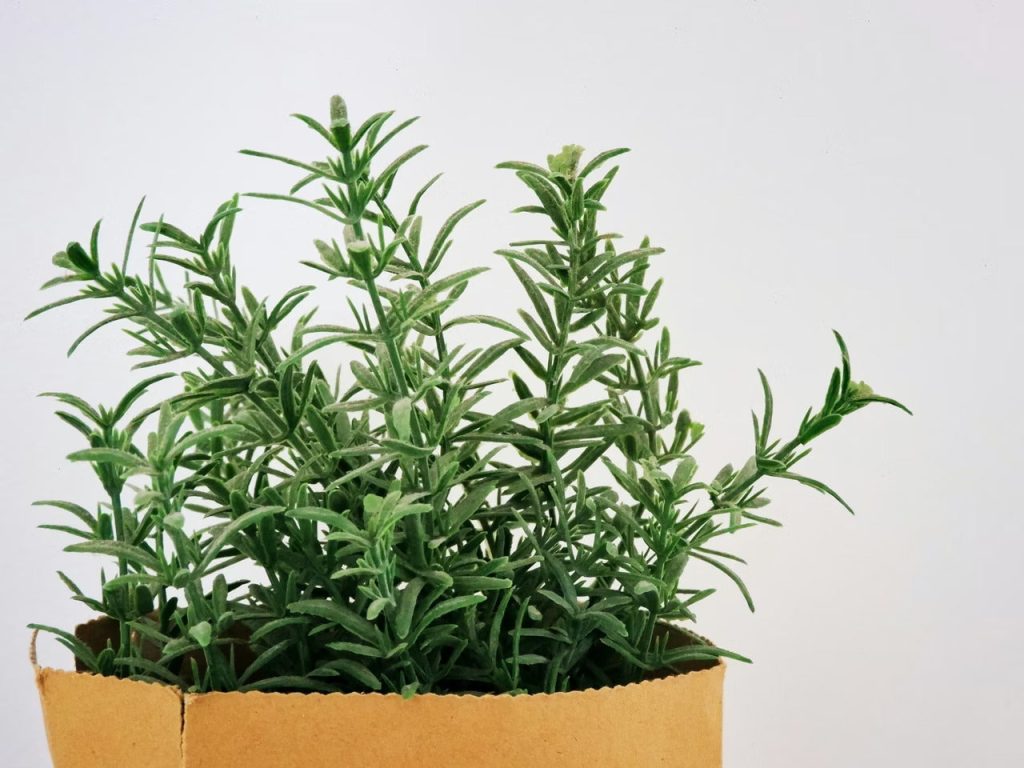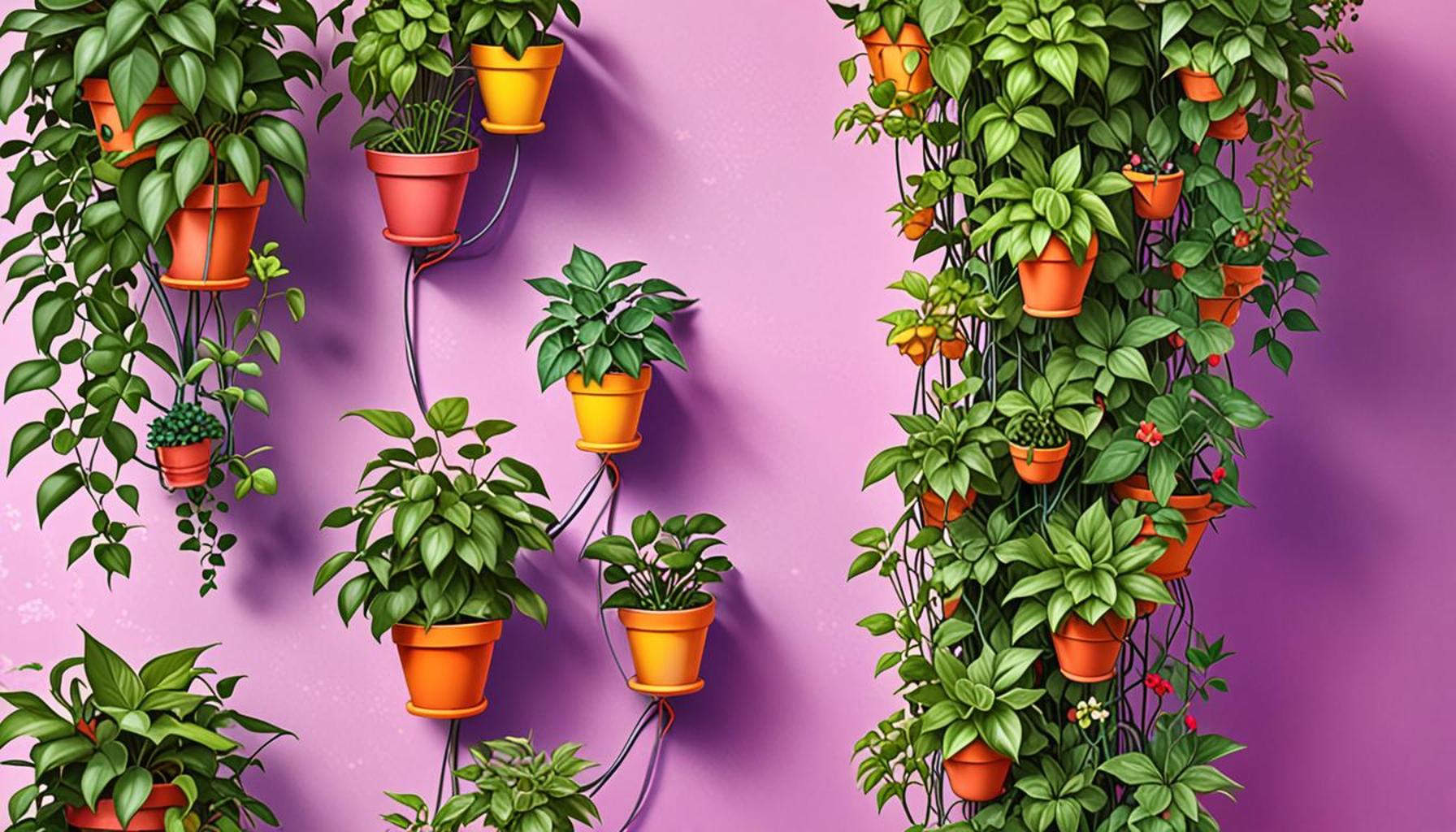Aromatic Plants for Beginners: Growing Herbs at Home

Unlocking the World of Aromatic Herbs
Growing your own herbs at home can be a rewarding experience, providing a fresh supply of aromatic plants right at your fingertips. Whether used in cooking, home remedies, or for their delightful scents, these plants enhance both your meals and your space. Most importantly, they are incredibly accessible, even for beginners.
Why Grow Herbs?
There are several compelling reasons to consider cultivating your own aromatic herbs:
- Cost-effective: Purchasing fresh herbs from a grocery store can add up quickly, especially if you’re using them frequently. By growing your own, you can save a significant amount of money. For instance, a single basil plant can yield several cuttings throughout the growing season, equating to the cost of multiple store-bought packages.
- Freshness: The vibrant flavors and aromas of freshly harvested herbs are unmatched. While dried herbs serve their purpose, they often lose essential oils and flavor compound. Fresh herbs, such as snipped mint or basil straight from the garden, can elevate a dish remarkably, providing scents and tastes that store-bought varieties can’t match.
- Variety: Home gardening allows you to experiment with herbs often unavailable at local supermarkets. Imagine plucking fresh lemon balm for your tea or adding unique culinary herbs, like tarragon or oregano, to your cooking repertoire. Your herb garden can become a unique, personalized space that fulfills your specific culinary desires.
Choosing the Right Herbs
Starting with a few key herbs can simplify the process and maximize your gardening success. Here are some popular choices:
- Basil: Known as the king of herbs, basil is perfect for sauces and salads. Varieties like sweet basil and Thai basil can add depth and authenticity to dishes like pesto or stir-fry.
- Mint: This refreshing herb is great not only for drinks and desserts but also for savory dishes. Consider mixing mint leaves into yogurt or salads for a surprising twist. It’s a highly adaptable herb that propagates easily, making it perfect for beginners.
- Rosemary: With its robust flavor, rosemary is fantastic for roasting meats and vegetables. Its sturdy nature means it thrives in various conditions, and it can bring an aromatic scent to your garden.
- Thyme: This versatile herb complements numerous cuisines, from French to Mediterranean. Its subtle, earthy flavor works well in marinades, soups, and roasted dishes.
As you explore the fascinating world of herb gardening, you’ll find joy in nurturing these plants and discovering their diverse uses. Not only can they beautify your space, but they also offer environmental benefits, such as attracting pollinators and improving air quality. Additionally, the act of gardening can improve mental well-being, offering a wonderful way to relax and de-stress.
This article will guide you through the essentials of getting started on your aromatic journey, empowering you to grow your very own herb garden at home. Whether you utilize a sunny windowsill, a small balcony, or a garden bed, the prospect of cultivating your own herbs is both exciting and fulfilling. You may soon find that your culinary endeavours are enhanced immeasurably by the simple act of snipping fresh herbs just outside your door.

DISCOVER MORE: Click here for ideal plants for busy gardeners
Getting Started: Essential Tools and Supplies
Before diving into the world of aromatic herbs, it’s important to equip yourself with the right tools and supplies. Having the essentials on hand will not only make the planting process smoother but will also enhance your gardening experience. Let’s break down the necessary items to kickstart your herb garden:
- Potting Soil: High-quality potting soil is crucial for healthy herb growth. Look for a mix that offers good drainage and is rich in nutrients. Many gardening centers offer pre-mixed options specifically designed for herbs.
- Pots or Planters: Choose pots with drainage holes to prevent waterlogging. If space allows, consider larger containers or raised beds, which can accommodate multiple plants. For those with limited space, small pots or even vertical planters can maximize your growing area.
- Watering Can: Proper irrigation is key to thriving herbs. A watering can with a small spout allows you to carefully control the amount of water you give each plant, ensuring they receive the right balance.
- Gardening Gloves: Protect your hands while working with soil and plants. Gardening gloves also prevent potential skin irritations from certain herbs.
- Labeling Supplies: For beginners, it can be easy to mix up your herbs. Use plant labels or stakes to mark each type, helping you keep track of their names, watering needs, and growth habits.
Having these tools will lay the groundwork for a successful herb garden, but understanding the growing conditions of each herb is just as essential. Proper sunlight, temperature, and watering practices can make all the difference in ensuring your aromatic plants thrive.
Understanding Sunlight and Space Requirements
Herbs generally prefer a sunny environment, thriving in a location that receives at least 6 to 8 hours of sunlight each day. If you are growing indoors, positioning your pots near a south-facing window can provide the necessary light. For outdoor gardens, assess your space for the best sun exposure.
In addition to sunlight, it’s essential to consider the spacing between plants. Each herb has specific requirements based on its growth habits:
- Basil: Needs around 12 inches of space between plants to allow for bushy growth.
- Mint: Can spread aggressively, so plant it in a pot or give it ample space of about 18 inches away from other herbs.
- Rosemary: Requires 12 to 24 inches between plants to accommodate its sturdy structure.
- Thyme: Enjoys a close-knit setup at about 12 inches apart, but shouldn’t be overcrowded to ensure adequate air circulation.
By carefully planning your layout and considering the light needs of your herbs, you’ll be setting yourself up for a bountiful harvest. As you gain more experience, you may even choose to experiment with different arrangements and combinations of herbs, enhancing both your culinary skills and your gardening knowledge.
In the next section, we will delve into the planting and care techniques necessary to keep your aromatic plants flourishing throughout the growing season, allowing you to enjoy the fruits of your labor more intimately and personally.
| Category | Benefits |
|---|---|
| Culinary Herbs | Enhances Flavor: Growing your own herbs, such as basil, parsley, and cilantro, adds fresh and vibrant flavors to your dishes, elevating your culinary creations. |
| Medicinal Uses | Natural Remedies: Many herbs, like chamomile and peppermint, are known for their therapeutic properties, providing natural relief for common ailments. |
| Air Purification | Improves Indoor Air Quality: Herbs such as mint and rosemary can help filter toxins from the air, creating a fresher living environment. |
| Sustainability | Eco-Friendly: Growing your herbs at home reduces the need for store-bought products, lowering your carbon footprint and supporting sustainable practices. |
The benefits of cultivating aromatic plants extend beyond just aesthetics; they can transform your household in numerous positive ways. Whether you are enhancing the flavor of your meals with fresh herbs, accessing natural remedies for health, purifying the air in your home, or practicing sustainability, the advantages are compelling reflection of their significance. By integrating these plants into your daily life, you not only enjoy their delightful fragrances but also reap the practical health benefits they offer. The journey into the world of herb gardening opens up new avenues for flavor exploration and wellness, prompting individuals to delve deeper into the fields of horticulture and culinary arts.
DIVE DEEPER: Click here to discover natural pest control strategies
Planting and Care Techniques for Thriving Herbs
Once you have your essential tools and an understanding of your herbs’ sunlight and spacing needs, it’s time to dig into planting and caring for your aromatic garden. Proper planting techniques and ongoing care will facilitate the best possible growth and flavor from your herbs, making your home garden a joy to maintain.
Planting Your Herbs
Planting herbs can be a fulfilling experience, especially when you witness their growth over time. Here are some steps to consider when planting:
- Start from Seeds or Seedlings: Both options are available to beginners. Seedlings from local garden centers can provide an immediate start, while seeds offer a more rewarding experience to cultivate from scratch. If opting for seeds, follow the packet instructions for planting depth and spacing.
- Transplanting Techniques: If you are using seedlings, gently remove them from their original containers, taking care not to damage the roots. Dig a hole in the potting soil larger than the root ball, place the seedling in, and cover lightly with soil.
- Watering Right: Post-planting, it’s essential to water your new herbs thoroughly, ensuring the soil feels consistently moist but not soggy. A gentle misting can also help to acclimatize seedlings.
The initial stages of planting are pivotal. A well-planned approach will support your herbs in establishing strong roots, allowing them to flourish in your garden space.
Ongoing Care for Healthy Growth
Caring for your herbs doesn’t end after planting. Regular maintenance is crucial to ensure healthy, aromatic growth. Here are some best practices:
- Watering Schedule: Develop a consistent watering routine. Herbs generally prefer moist soil but avoid overwatering, which can lead to root rot. It’s recommended to water every few days, adjusting based on the weather and the moisture level of your soil.
- Fertilizing: Use an organic fertilizer every four to six weeks during the growing season to promote healthy growth. Look for options labeled as suitable for herbs or vegetables to provide the right balance of nutrients.
- Pruning and Harvesting: Regular pruning stimulates growth and keeps your plants vigorous. Use scissors to trim leaves or stems, and don’t hesitate to harvest herbs frequently. This encourages bushy growth, and vibrant flavors can be appreciated throughout the season.
- Handling Pests: While herbs are generally resilient, be vigilant for pests like aphids or spider mites. If noticed, use insecticidal soap or neem oil as a gentle remedy to keep your herbs safe.
Understanding the needs of each herb is critical. Basil, for example, enjoys regular harvesting, while parsley benefits from more cautious trimming. Monitoring your plants as they grow will help you fine-tune your care routine.
Exploring the intricacies of herb planting and care opens a world of culinary possibilities. The vibrant flavors of fresh, home-grown herbs will not only enhance your meals but also provide a sense of accomplishment that comes from nurturing your aromatic plants. With the proper techniques and nurturing, your home garden can become a source of inspiration and delight, inviting you to discover new recipes and flavor pairings along the way.
DISCOVER MORE: Click here for expert tips on harvesting root vegetables
Conclusion
Diving into the world of aromatic plants and home herb gardening is an exhilarating journey that transforms not only your culinary creations but also your living space. By embracing the process of growing herbs at home, you unlock a treasure trove of fresh flavors and fragrances that can elevate everyday meals. The steps outlined—from choosing the right herbs and understanding their specific requirements to mastering effective planting and care techniques—are foundational to establishing a thriving herb garden.
Remember, successful herb gardening is as much about nurturing the plants as it is about creativity in the kitchen. As you become more familiar with your aromatic companions, you’ll discover the unique characteristics of each herb, enhancing your cooking experience. The satisfaction gained from cultivating your own herbs fosters a deeper appreciation for nature and the food you consume.
As you embark on this growing adventure, consider exploring a variety of herbs such as basil, thyme, and mint, each offering distinct flavors and aromas. Engaging with your herb garden not only promotes sustainability through home-grown ingredients but also directs you towards a healthier lifestyle, filled with the richness that fresh herbs bring to your palate.
So, gather your tools, select your favorite herbs, and start planting! Your aromatic dream garden is just a seedling away, and the possibilities that await in your kitchen will inspire countless delightful dishes. Happy gardening!



